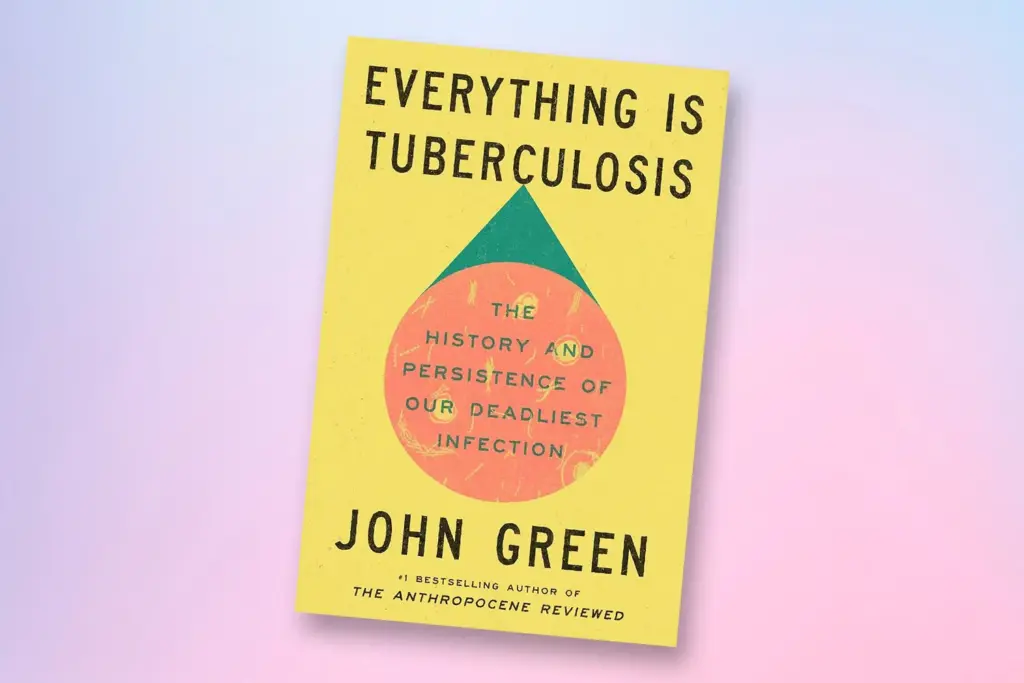Everything Is Tuberculosis: When Disease Rewrites Humanity’s Story – Book Review

I didn’t expect to lose an entire weekend to John Green’s “Everything Is Tuberculosis,” yet there I was, Sunday evening, emerging dazed from what began as mere historical curiosity and evolved into something profoundly moving.
Green hasn’t just written about tuberculosis – he’s crafted a love letter to the messy intersection of medicine and meaning-making that defines our species.
Not Your Typical Medical History
Let’s dispense with formalities: this isn’t the dry medical chronology I feared. Green darts unpredictably between centuries, drawing startling connections between ancient Egyptian medical papyri and modern antibiotic resistance.
His tuberculosis isn’t simply a bacterial antagonist in humanity’s story – it’s more like a coauthor, scribbling in the margins of our cultural evolution.
“We’ve built entire civilizations while carrying TB in our lungs,” Green writes in one particularly haunting passage. “Imagine composing symphonies while drowning from within, designing cathedrals while coughing blood into handkerchiefs. We didn’t triumph over tuberculosis; we created alongside it.”
The book jolts between the clinical and the poetic with a rhythm that mirrors tuberculosis itself – periods of seeming recovery punctuated by dramatic, fever-bright episodes. Green reconstructs tuberculosis’s devastating path through history with the precision of a scientist and the narrative instinct of someone who knows exactly when to zoom in on a single, heartbreaking detail.
The Strange Romance with Death
The section exploring the 19th century’s bizarre romance with consumption left me equal parts fascinated and disturbed. Green excavates fashion magazines advocating for the “consumptive look” – women deliberately paling their skin and pinching their cheeks for that feverish glow that signaled imminent death but also, somehow, desirability.
“To modern sensibilities,” Green notes wryly, “nothing seems less romantic than drowning in your own lung fluid, yet Byron declared he would ‘rather die of consumption than any other disease’ because of how it preserved physical beauty while supposedly elevating spiritual sensitivity.”
Green’s exploration of this twisted aesthetic avoids easy judgment. Instead, he suggests something more nuanced: that humans will always create meaning systems around suffering, no matter how objectively terrible.
It’s simultaneously our greatest flaw and finest quality.
When Science Meets Life
The book truly shines when Green drops the academic distance and lets his own experiences with illness inform his perspective.
A three-page reflection on waiting for test results – connecting his modern anxiety with the peculiar dread Victorian patients must have felt watching their handkerchiefs for flecks of blood – made me put the book down for several minutes to absorb its emotional weight.
His description of visiting an abandoned sanitarium in the Adirondacks reads like ghost story and scientific journal combined:
“Standing in those crumbling pavilions, I could almost hear the coughing, the desperate gasps for air, the whispered conversations between patients who knew they were dying but couldn’t say so directly. The architecture still speaks its purpose – those wide porches designed for wheeling beds outside in all weather, believing fresh air might somehow defeat what medicine couldn’t. Hope and desperation cast in concrete.”
Beyond the Western Narrative
Green thankfully avoids the trap of Euro-centrism. His chapters on tuberculosis in colonial contexts offer some of the book’s most damning and necessary insights.
He traces how imperial powers often introduced or exacerbated TB outbreaks, then used the resulting epidemics to justify racist ideologies about inherent susceptibility.
A particularly searing quote from his chapter on TB in indigenous communities: “The same European powers that introduced the bacteria then prescribed ‘civilization’ as the cure, creating a perfect circle of devastation justified by its own existence.”
His exploration of modern TB epidemics avoids poverty voyeurism while refusing to let readers look away from uncomfortable realities. Green visits TB wards in various countries, letting patients speak for themselves about living with a disease most Westerners consider historical. Their voices provide the book’s moral center.
Stolen Time and Artistic Legacy
I found myself dog-earing nearly every page in the chapter “What Consumption Consumed,” where Green speculates about cultural losses to tuberculosis. He constructs a haunting alternate history of artistic works we never got:
“Keats died at 25, having written nearly all his major poetry in a single feverish year. Bach’s sons died young of TB. Chekhov, Kafka, Orwell – all silenced decades too soon. The mathematics of creative loss are impossible to calculate. For every genius we remember despite tuberculosis cutting them short, how many potential symphonies, novels, and scientific breakthroughs disappeared without record?”
This isn’t mere sentimentality – Green builds a compelling case that tuberculosis significantly shaped Western art by systematically removing certain voices while spotlighting others, creating selection effects we rarely consider when discussing cultural evolution.
Rating: ★★★★★
Few books have made me reconsider something as fundamental as the relationship between disease and human creativity. Green has written what feels like three books in one: meticulous medical history, cultural analysis, and philosophical meditation.
His final chapter, drawing parallels between historical tuberculosis responses and modern pandemic politics, doesn’t feel tacked on but organically grown from everything preceding it. His observation that “societies reveal themselves in how they distribute suffering” will stay with me long after the historical details have faded.
“Everything Is Tuberculosis” isn’t just worth reading – it’s worth sitting with, arguing with, and returning to. In showing how thoroughly a single disease has shaped our world, Green ultimately delivers something more profound: a reminder that humans create meaning even (or especially) when confronted with their greatest vulnerabilities. I closed the book feeling strangely hopeful, which is perhaps its most surprising achievement of all.
Publisher: Dutton Books (Penguin Random House)
Publication Date: February 2025
Pages: 416
Genre: Narrative Nonfiction/Medical History
ISBN: 978-0-525-55593-8
Format: Hardcover, eBook, Audiobook (narrated by John Green)
Themes: Medical history, cultural impact of disease, mortality, art and illness, public health, scientific progress
Structure: Thematic chapters exploring tuberculosis through different lenses (art, literature, medicine, architecture, fashion) rather than strictly chronological approach
Setting: Global, with particular focus on European sanitariums, American tuberculosis hospitals, and contemporary TB treatment centers in various countries
Recommended for: Readers of Siddhartha Mukherjee’s “The Emperor of All Maladies,” Rebecca Skloot’s “The Immortal Life of Henrietta Lacks,” and Mary Roach’s works; anyone interested in the intersection of science, history, and culture
